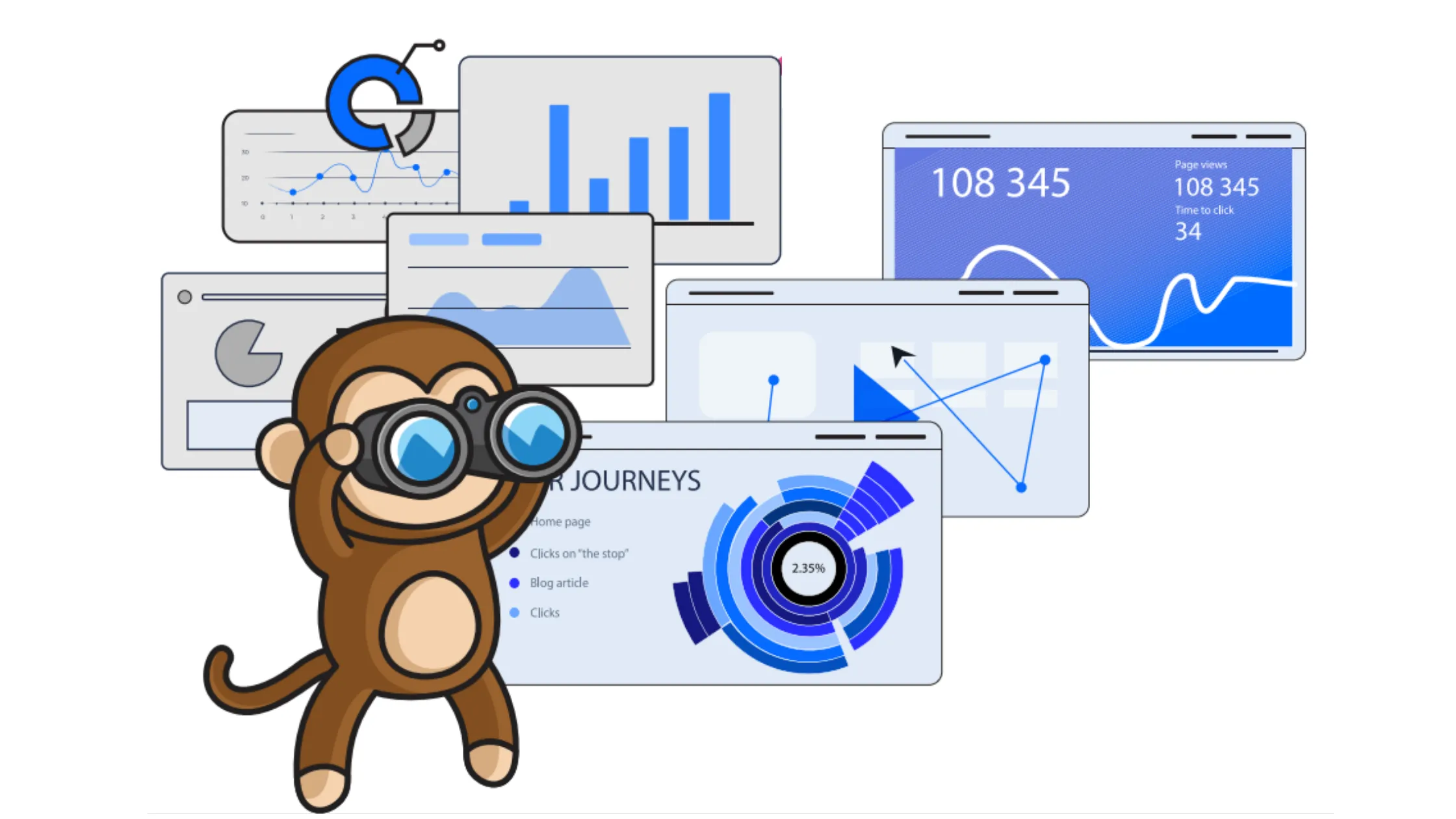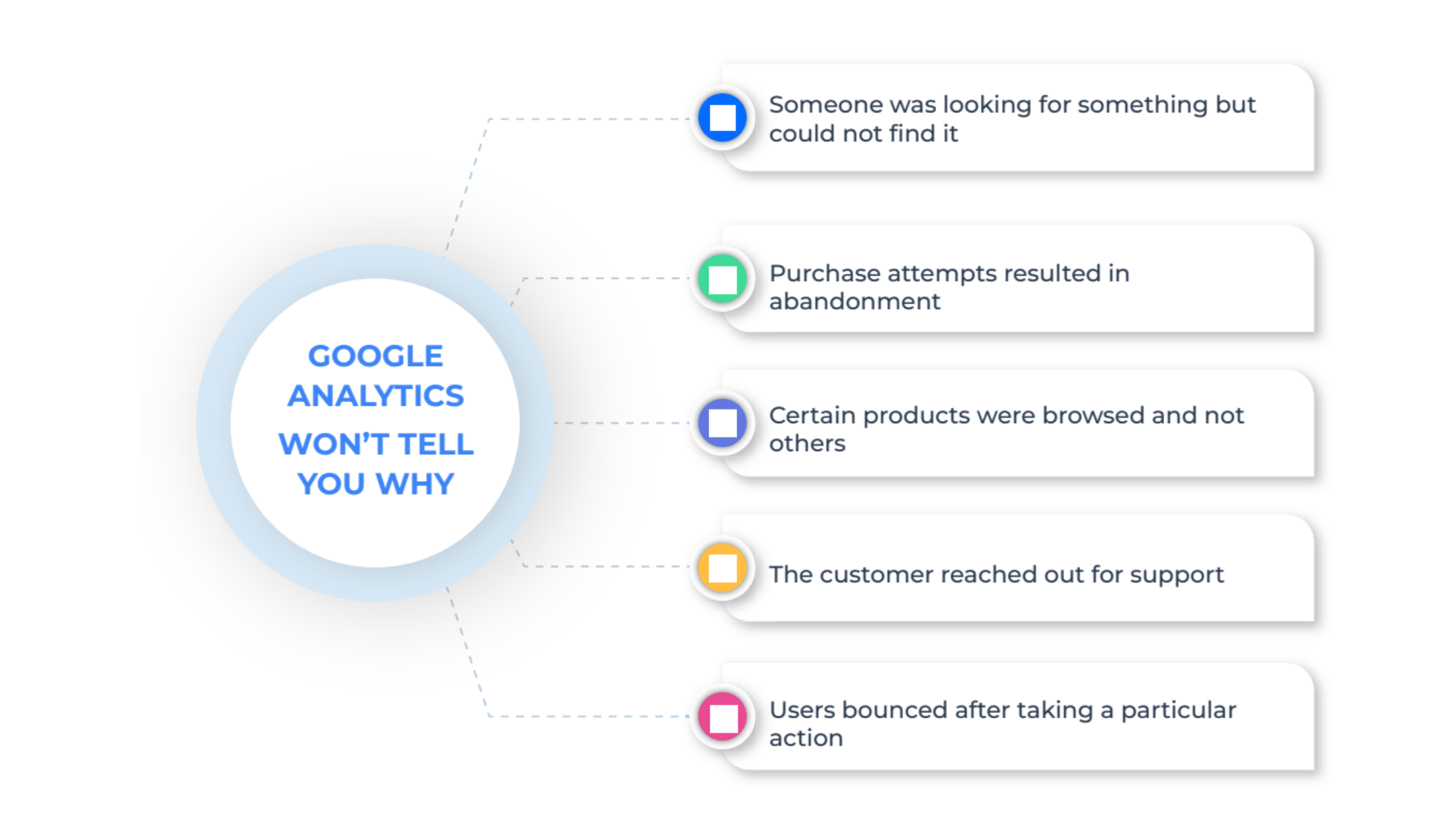Why Google Analytics 4 Falls Short for Effective Conversion Rate Optimization (CRO) for eCommerce

In the fiercely competitive e-commerce landscape, where clicking a button can make or break a sale, Conversion Rate Optimization (CRO) emerges as a pivotal strategy.
E-commerce companies rely heavily on their digital platforms to drive sales, making CRO an essential practice for enhancing user experiences, increasing engagement, and ultimately driving conversion rates.
While Google Analytics 4 (GA4) has its merits, it needs to address the nuanced needs of e-commerce CRO.
This article will explore why e-commerce businesses should consider augmenting their CRO toolkit beyond GA4 to achieve peak performance and unparalleled success.
Why E-commerce CRO Matters
Elevating User Experiences
For e-commerce companies, the user journey is everything. Every interaction matters from the moment a user lands on the website to the final purchase.
CRO focuses on understanding user behavior, preferences, and pain points, enabling businesses to tailor their platforms for seamless experiences that guide users toward conversion.
Driving Revenue Growth
The ultimate goal of e-commerce is to drive sales and revenue. Even a marginal increase in conversion rates can substantially impact the bottom line.
CRO enables businesses to optimize every aspect of the online shopping process, from product pages to checkout, to maximize revenue potential.
Outshining Competition
E-commerce is saturated with options. To stand out, businesses must deliver exceptional experiences that keep users engaged and convert them into loyal customers.
CRO strategies allow e-commerce companies to differentiate themselves and gain a competitive edge by consistently refining their digital storefronts.
Cost-Efficient Strategy
Investing in CRO can yield higher returns than investing solely in marketing efforts.
By converting a higher percentage of existing traffic, businesses can reduce customer acquisition costs and increase profitability.
Personalization and Targeting
E-commerce CRO involves segmenting users based on their behavior, preferences, and demographics.
This segmentation allows businesses to deliver personalized experiences, targeted recommendations, and dynamic content, all of which drive higher engagement and conversions.
Why GA4 Falls Short for E-commerce CRO

Limited Historical Data
GA4 is relatively new, meaning businesses might need a significant historical data set. E-commerce CRO often requires historical data analysis to identify trends and patterns that impact conversions.
GA4's limited historical data might hinder businesses from making informed decisions based on past performance and market shifts.
With robust historical data, businesses may be able to understand the impact of changes on conversion rates accurately.
Complex Implementation
While GA4 offers advanced tracking capabilities, its event-based model requires more complex implementation than Universal Analytics.
This can lead to errors and data collection discrepancies, affecting CRO initiatives' accuracy.
No Auto-tracking If you want to record user events in Google Analytics, you’ll need to give your engineers a list of everything you want to know so they can tag those events.
This approach lacks both efficiency and specificity. It’s inefficient because it calls for a large amount of additional work, and it’s not specific because it produces a lot of extraneous data that often goes unused.
A sophisticated user experience and analytics platform will record everything for you—no engineers are required. From click and swipe rates to mouse movements, taps, and double-taps, advanced tools will collect this information for you automatically.
Inability to Create Behavioral Segments for Seamless Integration
A significant hurdle that e-commerce businesses encounter with GA4 is its limitations in creating behavioral segments that can be seamlessly integrated into other solutions.
Effective CRO often necessitates the ability to create customized user segments based on intricate behaviors, preferences, and actions.
However, GA4's capacity to define and export such segments for use in other analytical tools or marketing platforms might be limited, hindering the ability to orchestrate targeted optimization strategies.
Incomplete Data Attribution
GA4's attribution model can be challenging for businesses aiming to understand the complete user journey.
It focuses on events and interactions rather than the entire user experience, making it challenging to attribute conversions accurately to specific touch-points.
Lack of Customization
While GA4 allows for some customization, it might cater to the specific needs of some businesses.
Effective CRO often requires granular customization and tracking of user interactions, which GA4's predefined event parameters might not fully address.
Product Page Optimization
Product pages are the heart of e-commerce websites. Effective CRO involves meticulously optimizing product images, descriptions, reviews, and pricing.
GA4's focus on event tracking might not provide the granularity needed for comprehensive product page analysis.
Cart Abandonment Analysis
Cart abandonment is a significant challenge for e-commerce. Analyzing the reasons behind cart abandonment requires a deep dive into user behavior and intent, which GA4's event-based tracking might need help to provide.
Payment and Checkout Optimization
The checkout process is a critical conversion point. E-commerce CRO aims to streamline and optimize this process to minimize friction. GA4's data might need to fully capture the intricacies of checkout hurdles and the impact on conversion rates.
User Intent and Purchase Motivations
E-commerce success hinges on understanding why users buy or don't. GA4's event-centric approach should include the context and emotional triggers influencing user purchase decisions.
Expanding Your CRO Toolkit
To truly excel in Conversion Rate Optimization, businesses should consider supplementing GA4 with additional tools and strategies
HTML / CSS-based On-Page Analytics
A visual portal to user behavior. On-page analytics furnish a visual narrative of user interactions, illuminating hotspots and pain points across e-commerce platforms.
Businesses glean insights into user preferences and behavior patterns by strategically plotting user clicks, scrolls, and engagement and frustration zones.
This visual clarity enables pinpoint optimization of crucial elements, propelling conversion rates by ensuring seamless user experiences.
Session Recordings
Unveiling the User's Journey: Session recordings record users' navigational journeys, affording businesses an intimate glimpse into the user mindset.
Through these recordings, e-commerce entities can spot hesitation, confusion, and engagement moments. This intelligence fuels informed optimizations, eliminating friction points and honing the path to conversion.
Elevating Personalization with User Segmentation
Users, according to demographics, behavior, and preferences, are the bedrock of e-commerce personalization.
By categorizing users into distinct groups, businesses can deliver targeted Segmenting content, product recommendations, and offers that resonate deeply.
This precision bolsters engagement and conversion rates as users feel understood and catered to individually.
User Behavior Analytics Tools
To focus on user behavior analysis and offer advanced features like auto-tracking, segmenting, and understanding user actions in greater detail.
A/B Testing and Personalization Tools like AB Tasty or VWO: Implement A/B testing to compare variations of product pages, checkout processes, and promotional strategies. Personalization tools enable dynamic content delivery based on user behavior.
Customer Surveys and Reviews like GetFeedback: Collect direct customer feedback to understand their concerns, preferences, and suggestions, driving more targeted optimizations.
User Testing like UXtweak or Maze: Conducting usability tests and user interviews can uncover usability issues and offer qualitative insights that quantitative data might miss.
In conclusion
E-commerce businesses operate in a realm where user experiences directly translate to revenue.
Conversion Rate Optimization is the cornerstone of success in this environment, as it fine-tunes digital platforms for maximum engagement and conversions.
While Google Analytics 4 offers valuable insights, its limitations in historical data analysis, product page optimization, cart abandonment analysis, checkout optimization, and understanding user intent make it crucial for e-commerce companies to expand their CRO toolkit.
Businesses can achieve superior e-commerce success by utilizing digital experience analytics tools such as Air360.
This tool offers features such as auto-tracking, behavioral segmentation, on-page analytics, session replays, and customer insights that help businesses master conversion rate optimization (CRO).
By using Air360, businesses can create a memorable story of their CRO success and increase their conversion rates.
